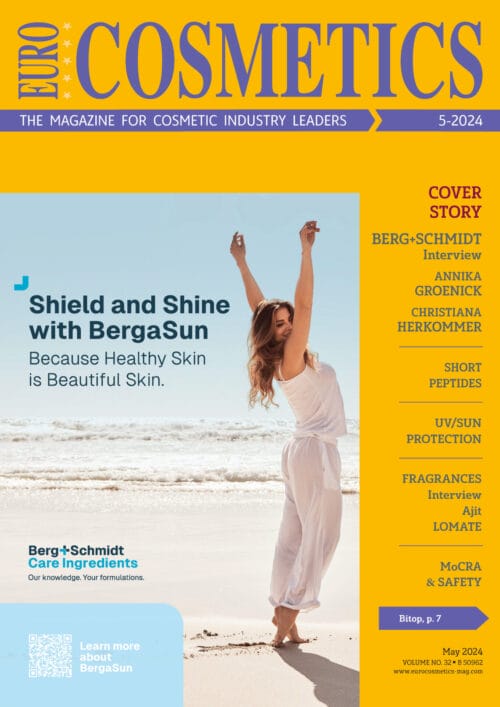
What is skin microbiota?
The skin has a barrier function. Advances in science have made it possible to discover that it is duly supported in its protective functions by an army of micro-organisms that are invisible to the naked eye but are present in their millions on every square centimeter of skin: the skin microbiota.
The cutaneous microbiota is an individual marker
The skin microbiota varies in quantity and quality from person to person. Variables such as age, sex, immune system, pH, temperature and humidity will modify the composition of the skin microbiota.
For example, as the skin is more acidic in men than in women, they would have a higher microbial density. Similarly, the use of cosmetic products and the production of hormones create
differences. However, two distinct categories can be identified within the skin microbiota: the “resident” flora and the “transient” flora.
One bacteria is particularly representative of this resident skin flora
In the epidermis, it is Staphylococcus epidermidis, as well as the yeast Malassezia, which is found in areas rich in sebum (forehead, back, face and scalp). This flora can also consist of opportunistic pathogenic bacteria and lead to skin imbalances.

1 – Atopic skin: Staphylococcus aureus
One of the most common transient species is Staphylococcus aureus, which is implicated in atopic dermatitis. In people with atopic dermatitis, there is a decrease in bacterial diversity in the
skin microbiota. One bacterium stands out during flare-ups: Staphylococcus aureus.

2 – Acne skin: Cutibacterium acnes
Cutibacterium acnes is the main bacteria involved in acne. It is a bacterium present in the sebaceous glands of all individuals and exists in different types. Cutibacterium acnes is an integral part of the skin microbiome and contributes to its balance. It is a saprophytic bacterium, i.e. it feeds on decomposing organic matter such as sebum. Acne is therefore a disease of the skin microbiota.

What effects does the sun have on the skin microbiome?
To investigate the impact of sun radiation on the microbial composition of the skin, a study1 was conducted involving lifeguards who were heavily exposed to sun radiation throughout the summer months. Skin samples were collected from each participant in the beginning of the summer (May) and at the end of the summer (October), as described in Methods. The microbial composition in these samples was analyzed to determine the cumulative effects of daily exposure to sun radiation and sea water spray.
Studies showed a seasonal change in the distribution of low abundance bacteria following long exposure to solar radiation. This change can potentially protect the skin from solar induced damage. We assume that the bacteria enriched after long exposure to UV can produce a wide range of protective metabolites, and that these metabolites which accumulate throughout the summer season, can have a long term beneficial impact on the skin health.
Which active ingredients (studies) to improve the skin microbiome?
To strengthen and protect the skin barrier, formulators need to use ingredients that are compatible with skin’s microbiome such as cold-pressed oils, whole plant extracts … In any case, studies to prove the efficiency can be done.
Today, there are some model on “standard microbiome” that can be performed to scientifically prove that a product’ is safe on the microbiota.
How do prebiotics, probiotics and postbiotics work in general?
The words probiotics, prebiotics, and postbiotics may sound like variations of the same thing, but what a difference a prefix makes. The first is a category of health-promoting microbes. The latter two groups are types of beneficial molecules. But all three biotics are critical for supporting the community of microscopic organisms that live in the gastrointestinal tract, known as the gut microbiome. With both beneficial and harmful bacteria living in the human body, these diet-related factors—the biotics—help tip the balance in the positive direction. It’s important to understand their differences, as you’ll see, because each of these factors serves a distinct purpose, even as they work together.
Despite their importance for the gut microbiome, the health benefits of these biotics, which are present in certain foods or result from their metabolism, extend beyond the digestive tract. A growing body of scientific evidence has linked prebiotics, probiotics, and postbiotics, with improvements in metabolic diseases. “We’re still really early in this research,” says Anna Rosales, a registered dietitian and senior director of government affairs and nutrition at the Institute of Food Technologists, a global nonprofit association based in Chicago. “There’s a lot more for us to learn.”
Conclusion
Understanding the skin microbiota opens up many possibilities for innovation in the cosmetic field. Indeed, an unbalanced skin microbiota could induce or be due to:
– skin diseases, such as acne, atopic dermatitis or psoriasis
– dandruff
– unpleasant body odour
– or even accelerated skin ageing
Consumers are increasingly interested in this, and manufacturers are therefore starting to develop products that respect the skin and its microbiota, limiting preservatives or an excessively high pH. The associated claims are to maintain or protect the balance of the microbiota.
Some products already claim to be able to restore an unbalanced microbiota or to improve the condition of the skin through an action on the microbiota. These products can be prebiotics (substrate that will be used by a microorganism), probiotics (the microorganism, living or not depending on the definition), postbiotics (product derived from the microorganism), or active ingredients with a demonstrated effect on the skin microbiota.
A new area is opening for skin and I would say Skin Health!



